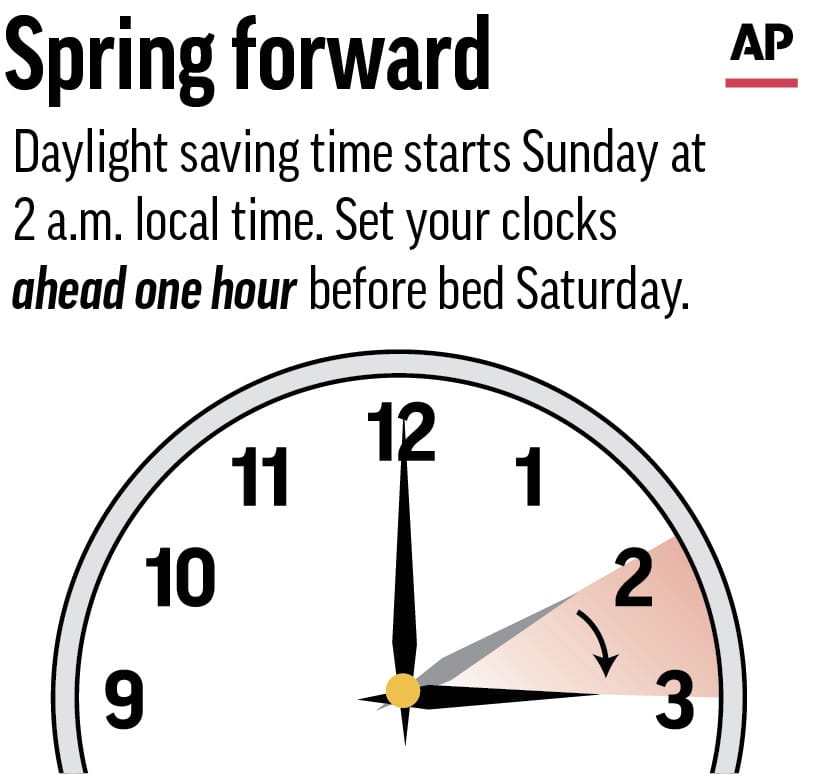For some this time of year, the “spring forward” is not a welcomed event, they are losing an hour of sleep in the morning, and the adjustment can take a week or two to get used to. For others it is a welcomed sight, to know that their mornings will be brighter, and their evenings last longer because of it staying light later. As reported by the AP:
Daylight saving time announces its entrance at 2 a.m. local time Sunday for most of the country, but there are some states that do not follow this.
WASHINGTON (AP) — Even though winter doesn’t slip away until next weekend, time has its marching orders, for most of the United States, it’s time to “spring” forward.

Daylight saving time announces its entrance at 2 a.m. local time Sunday for most of the country. Standard time hibernates until Nov. 6. It will stay lighter for longer into the evening, but the sun will rise later in the morning than it has during the months of standard time.
Remember to set clocks an hour ahead, usually before bed Saturday night.
No time change is observed in Hawaii, most of Arizona, Puerto Rico, the U.S. Virgin Islands, American Samoa, Guam, and the Northern Marianas.
A poll conducted last October shows that most Americans want to avoid switching between daylight saving and standard time, though there is no consensus behind which should be used all year.
The poll from The Associated Press-NORC Center for Public Affairs Research found only 25% of Americans said they preferred to switch back and forth between standard and daylight-saving time.
Forty-three percent of Americans said they would like to see standard time used during the entire year. Thirty-two percent say they would prefer that daylight saving time be used all year.
Source AP






